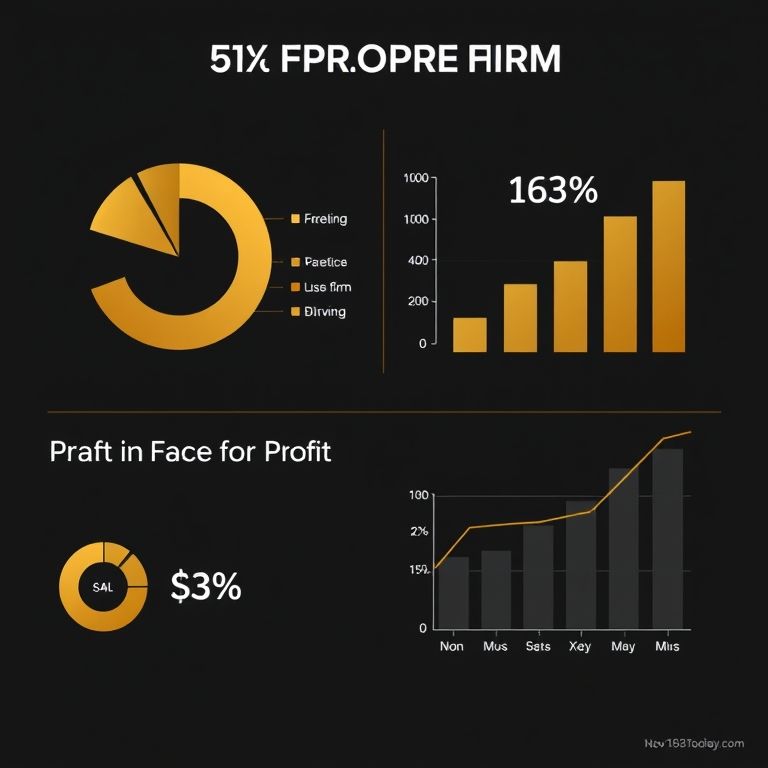What is the profit split at forex prop firms?
What is the Profit Split at Forex Prop Firms?
Introduction
If you’ve been eyeing prop trading as a path, you’ve probably heard traders talk about “the split.” It isn’t just a number on a contract—it’s the everyday math that decides how your skill translates into real earnings after you pass the evaluation and start trading with firm capital. The gist: you bring the edge, the firm supplies the capital, and the split is how you share the profits—and sometimes the losses—over time.

Understanding the Profit Split
- Typical ranges and what they mean
Most forex prop firms start with a profit split in the 60/40 to 80/20 ballpark, trader/firmer, after hitting targets. Some shops tilt toward 70/30 or 75/25 as a default; others adjust with performance, risk discipline, and sellable trader credentials. The exact split is often tiered: better performance or lower risk can push you toward the more favorable side, but initial weeks of live trading can be more conservative.
- How payout works in practice
Profits are calculated after a monthly or quarterly window, sometimes with a reserve for fees, platform costs, or data subscriptions. If you clear a target and stay within risk limits, you’ll receive your share, while the firm keeps the rest to cover platform maintenance, growth, and a safety buffer.
- An example you can relate to
Imagine a month where you net $12,000 in pure profit after fees. With a 70/30 split, you’d take home around $8,400, while the firm pockets about $3,600. If you’re still evolving your strategy, some firms apply a temporary, tighter split that gradually improves as you demonstrate consistency.
Asset scope and the platform fit
- Multi-asset playground
Beyond forex, many prop desks give access to options, indices, commodities, stocks, and even crypto on vetted platforms. This diversity helps you test risk budgets across correlated markets and avoid over-concentration in a single instrument.
- Practical note on risk controls
With more assets comes more variables. Firms implement daily loss caps, max drawdown limits, and cooldown periods after significant drawdowns. Your edge has to survive those guardrails, not fight them.
Advantages and caveats
- Why traders love prop splits
You gain leverage without dipping into your own capital, plus a structured path with coaching, performance tracking, and a built-in risk system. For many, the momentum of a funded environment accelerates skill growth—especially when you get real-time feedback from the risk team and mentors.
- Cautions to keep in mind
Initial splits can feel tight as you build consistency, and there can be locked-in periods or clawback clauses if you violate risk rules. Start with a clear contract read and a test period if offered, so you know when your edge translates to payout.
Reliability tips and strategies
- Do your homework
Read the contract, clarify payout cadence, and confirm whether there are monthly or quarterly settlement rituals. Ask about clawbacks, underperformance penalties, and what happens if a month closes with bigger drawdowns.
- Practical playbook
Keep a disciplined risk plan: fixed daily loss limits, per-trade risk, and a live-trading journal. Diversify across correlated assets only if your risk system can handle the nuance. Practice on a demo or simulator when available before committing to live capital.
- Real-world learning
A seasoned trader I know gradually shifted to a higher split after proving a steady win rate combined with strict risk discipline. The lesson: consistency opens the door to a better share, but it’s the boring, repeatable habits that earn it.
DeFi, go-to-market, and future trends
- DeFi’s promise and challenges
Decentralized finance is reshaping access to liquidity and transparency, but go-to-market models for prop trading in DeFi face liquidity fragmentation, oracle risk, and regulatory scrutiny. Smart contracts can automate some payout logic, yet security audits and bug risks remain real.
- Smart contracts, AI, and new frontiers
Smart contracts can streamline profit-sharing rules and risk governance, while AI-driven analytics help optimize position sizing, drawdown management, and scenario testing. The future likely blends solid risk controls with adaptive algorithms that learn from market regimes.
- What’s next for prop trading
Expect more flexible capital programs, clearer performance-based tiers, and better tooling for risk dashboards. Traders who combine a strong edge with disciplined risk and a willingness to adapt to new tools will ride the next wave, across forex and other assets.
Promotional note and slogan
Prop trading isn’t just about the split—it’s about choosing a partner that scales with your edge. Profit splits that reward steady skill, disciplined risk, and continuous improvement.
Slogan: Pair your craft with capital that grows with you—profits that scale as your edge sharpens.
YOU MAY ALSO LIKE